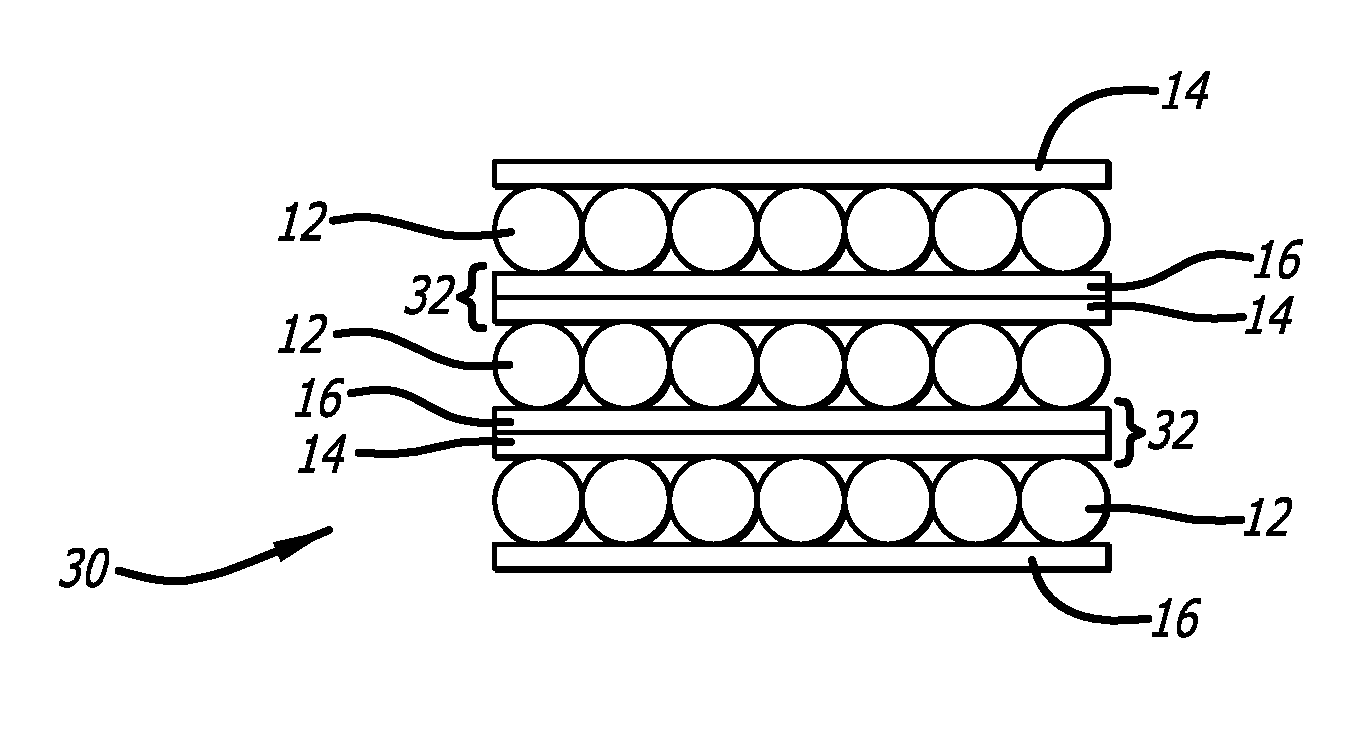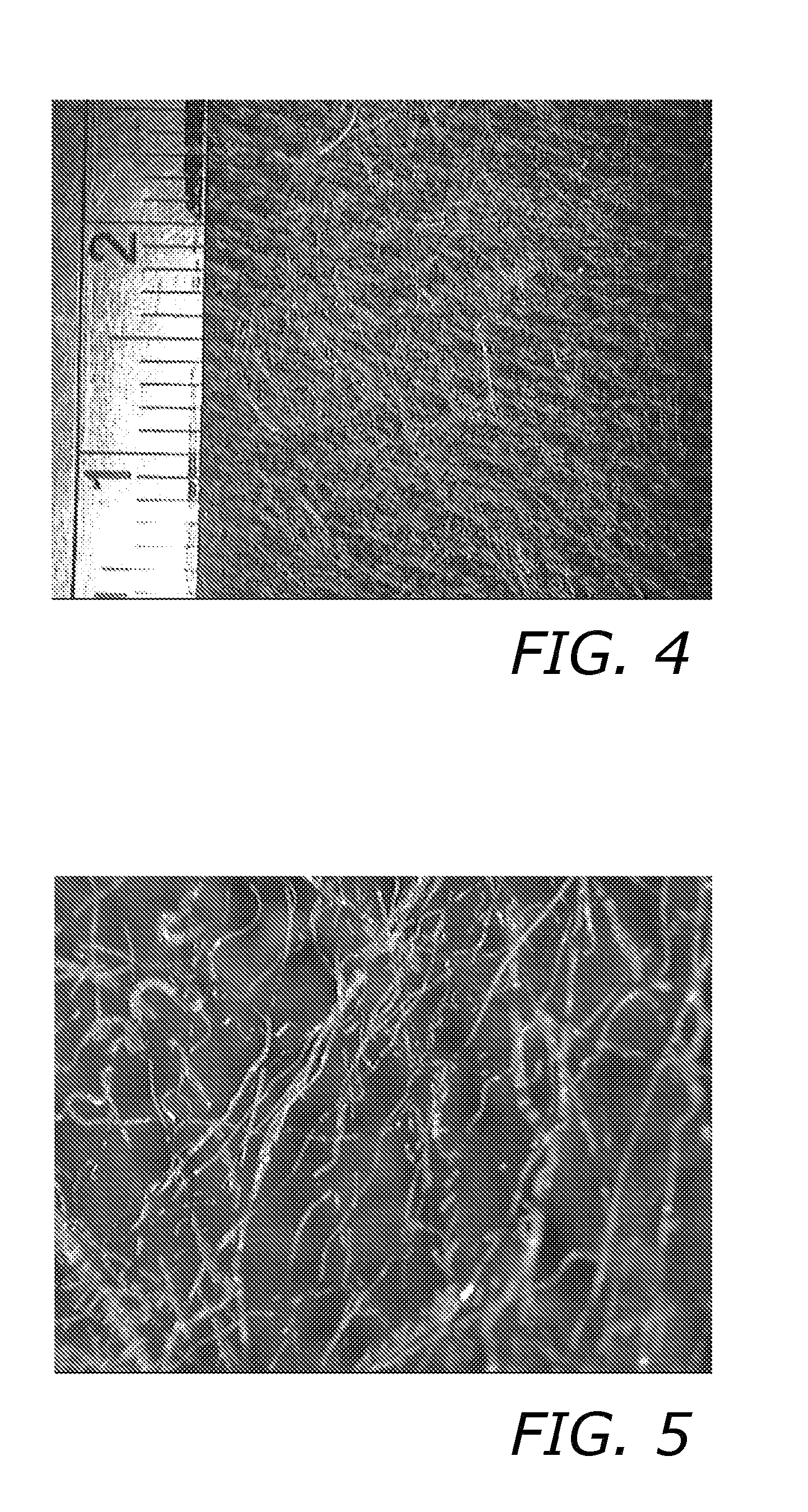Structured thermoplastic in composite interleaves
a technology of thermoplastic interleaf and composite interleaf, which is applied in the field of pre-pregs, can solve the problems of inability to cure thermoplastic interleaf layers, poor impact resistance, and inability to withstand high temperature, and achieves the effect of high strength
- Summary
- Abstract
- Description
- Claims
- Application Information
AI Technical Summary
Benefits of technology
Problems solved by technology
Method used
Image
Examples
example 3
Prepreg C
[0132]A prepreg was manufactured by applying 36 gsm M56 resin films to either side of 134 gsm AS7-12K UD fibre and passing through consolidation rollers. Subsequently, 128D04 veil was then applied to one side of the prepreg before passing through a further set of consolidation rollers. The resultant prepreg according to the invention had a resin content of 35%.
example 1
Conductive Example 1
[0148]Eight plies of a M21E prepreg (available from Hexcel) were laid up (0 / 90). Between each ply was placed polyamide veil (PA 6) that had been coated with silver and then calendered (compressed) to produce a material that was both lightweight and very thin. The veil had a weight of 11 gsm and was 10-20 microns thick. Photomicrographs of the veil are shown in FIGS. 8 and 9 where the fibers are shown in white. The fibers have an average diameter of about 15 microns and a melting point of 252-260° C.
[0149]The prepreg was cured in an autoclave at 180° C. and 3 bar pressure. The through thickness resistance was determined as outlined above and the result shown in the Table 1 below and compared to a Comparative Example made by the same process and having interleaf layers comprising resin but without a sifter-coated veil.
TABLE 1Conductive ExamplesPanel descriptionThrough thickness resistance (Ohms)Comparative7.0ExampleExample 10.40
[0150]Images of cross-sections throug...
example 2
Conductive Example 2
[0151]8 plies of a M21E prepreg (available from Hexcel) were laid up to form a laminate of Sample A. This material was cured in an autoclave at 180° C. and 3 bar pressure. The through thickness resistance was determined as outlined above. 8 plies of a M21E prepreg containing 0.5 wt % of solid carbon microspheres in the resin were laid up to form a laminate of Sample B. This material was also cured in an autoclave at 180° C. and 3 bar pressure. The through thickness resistance was again determined. Finally, 8 plies of M21E prepreg with silver coated polyamide PA12 polymeric sheets in the interleafs between the plies were laid up to form a laminate of Sample C. Again the through thickness resistance was determined. The results are presented in the below Table 2.
TABLE 2Conductive ExamplesPanel descriptionThrough thickness resistance (Ohms)Sample A5-10Sample B0.4Sample C0.4
[0152]It should be noted that any of the veils described in Examples 1 and 3 can also be coated...
PUM
| Property | Measurement | Unit |
|---|---|---|
| thickness | aaaaa | aaaaa |
| thickness | aaaaa | aaaaa |
| pressure | aaaaa | aaaaa |
Abstract
Description
Claims
Application Information
 Login to View More
Login to View More - R&D
- Intellectual Property
- Life Sciences
- Materials
- Tech Scout
- Unparalleled Data Quality
- Higher Quality Content
- 60% Fewer Hallucinations
Browse by: Latest US Patents, China's latest patents, Technical Efficacy Thesaurus, Application Domain, Technology Topic, Popular Technical Reports.
© 2025 PatSnap. All rights reserved.Legal|Privacy policy|Modern Slavery Act Transparency Statement|Sitemap|About US| Contact US: help@patsnap.com



